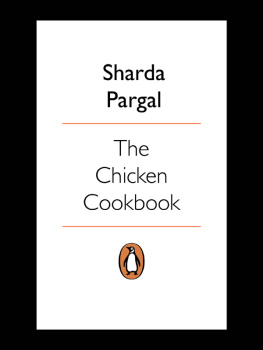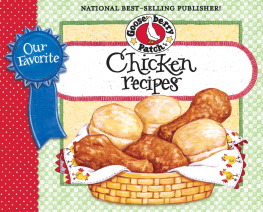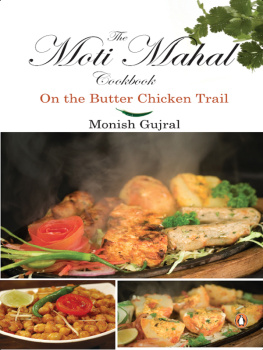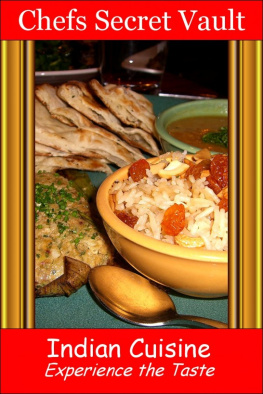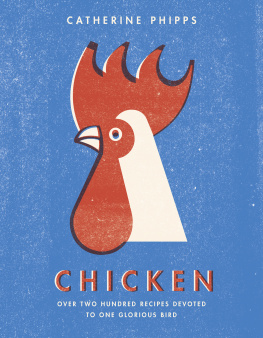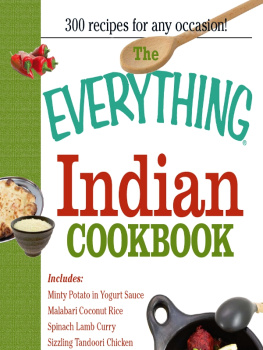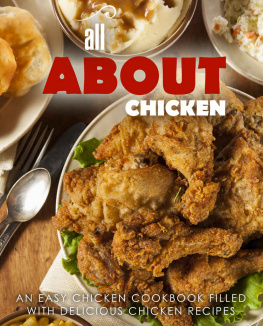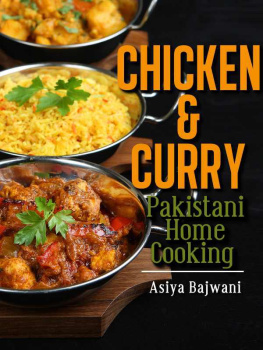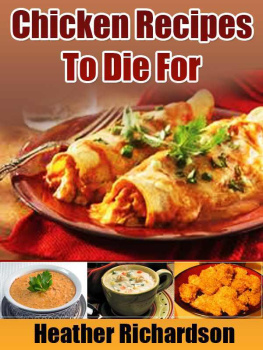My husband, Virendra Pargal, has been my pillar of strength.
His unconditional support, guidance and appreciation, and unstinting encouragement have made this book possible. My best critics and admirers have been my daughters, Dr Anisha Pargal and Anjali Forbes, and my sister Rama Tandon. My grateful thanks to my enthusiastic friend Gudoo Kapoor, who has been a great help in the compilation of this book, and to my friends Monica Sethi and Manjul Kumar who provided unwavering moral support in the initial years of my career. I take this opportunity to thank my brothers, Jeet, Vikram, Prabodh and Yogi Mahajan; my good friend Mrs Mirdula Bhaskar; my sister-in-law Mrs Monica Mahajan; and my nieces Triveni Mahajan and Richa Bhaskar, who have supported all my endeavours over the years. My very special thanks to Mr Khushwant Singh who introduced me to Penguin Books, Mrs Bhicoo Manekshaw who reposed faith and confidence in my expertise and Ms V.K. Karthika for her valuable guidance.
Last but not least, my grateful thanks to Sherna Wadia for her efficient editing, patience, co-operation and valuable suggestions.
Introduction
The Indian jungle fowl is the acknowledged progenitor of domestic fowls the world over. It is native to a wide region all the way from Kashmir to Cambodia, with perhaps the centre of its origin being in the Malaysian landmass. From literary evidence, it appears that traditionally, non-vegetarian food was mainly meat based, and fowl is only sporadically mentioned. Ibn Batuta tells us that murgh kabab and dojaj or pulao with murgh musallamroasted chicken or quail placed on a dish of rice cooked in gheewere some of the items that figured on the menu during the Sultanate period. Abu Fazal in
Ain-I-Akbari mentions that musammana fowl stuffed with minced meat and spiceswas served at Emperor Akbars royal court.
Domingo Paes remarked on poultry fowls (being) remarkably cheap in Vijayanagar. Since good beef was unavailable or scarce during colonial times, the domestic fowl was a great standby. According to K.T. Achaya in The Historical Dictionary of Indian Food, the people of pre-Aryan times had no reservation in eating the karugu or kozhi (chicken), as reflected in Sangam literature. The domestic chicken made its way around the world at an early date. Magellan, the first European to reach Brazil, described how he had laid in a supply of chicken on board, in AD 1519.
Non-vegetarian food has thus been cooked, enjoyed and relished in every corner of India, since ancient times. The cuisine has been enriched by variations, which have been constantly incorporated, and have become traditional family recipes. Indian cuisine has always been as diverse as its religions, culture and regionsfrom Kashmir to Kanya Kumari and the Bay of Bengal to the Arabian Sea. The shimmering snowy peaks, tall fir and poplar trees, the gurgling rivulets, and abundant fruit are Gods gift to the people of Kashmir. Their exotic cuisine is laced with saffron and other aromatic herbs such as aniseed, fenugreek, ginger, asafoetida, red chillies, almonds, walnuts, sultanas, and poppy seeds. The Hindus and Muslims use different spices.
The Muslims use garlic and Kashmiri onions called praan in their preparations, and lamb is the popular meat. The royal chefs of the Hindu rajas incorporated these ingredients into their own food to create delicious dishes like yakhani gosht, meat cooked in herbs; abgosht, meat cooked in thick milk with spices; rogan josh, richly spiced meat, cooked in curd, and coloured with the petals of the coxcomb flower; and gostaba and rishtacreamy kababs, and kormas, which are served at weddings and reflect the Mughal and Persian influence extending from Kashmir to Awadh and Hyderabad. Awadh was part of the Kaushal kingdom, ruled by the Suryavanshi dynasty of Ayodhya. It reached the zenith of culinary art during the rein of the Nawabs of Awadh. Nawab Asaf-ud-Daulah was a great connoisseur of food and several bawarchikhanas or private kitchens flourished during his reign, resulting in a high degree of culinary skills. As many as a hundred dishes could be laid out on the dastarkhwan or ceremonial dinning table.
Several culinary skills such as dumpukth cooking, and the preparation of kushtas were developed. Dumpukth cooking involves marinating the meat in curd, spices, herbs and dry fruit, sealing it in pots and cooking it over a low fire, thus preserving all the subtle flavours and aromas. Kushtas were pills made from the extracts of real rubies, pearls, gold, silver and saffron, etc. The pills were fed to the fowls for a few days, and used in incredible preparations of murgh korma, murgh musallam, murgh do piaza, kaju murgh, gulnar kababs, etc. It is said that a nawab who was a true connoisseur of food lost his teeth, but his appetite could still be satisfied with delicate melt-in-the-mouth kakori kababs. The murgh korma and kaju murgh with their white gravies of milk and almonds or curd and nuts were created to match the ambience of the Taj Mahal for Emperor Shah Jehan.

